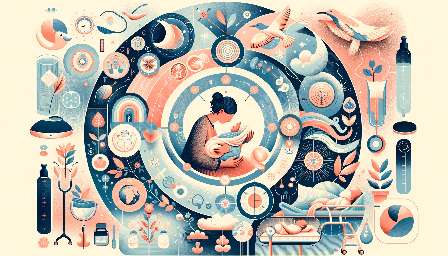During the postpartum period, it's crucial to focus on abdominal muscle rehabilitation and healing to support childbirth recovery. This topic cluster will delve into the importance of postpartum care and explore a variety of therapies, exercises, and practices that can aid in postpartum healing. We will also discuss the specific challenges that women face in rebuilding their abdominal strength after childbirth and provide guidance on how to effectively address these challenges.
The Importance of Abdominal Muscle Rehabilitation Postpartum
After giving birth, a woman's body undergoes significant changes, including stretching and weakening of the abdominal muscles. These changes can lead to a variety of postpartum issues, such as diastasis recti, back pain, and pelvic floor dysfunction. Therefore, focusing on abdominal muscle rehabilitation postpartum is essential to address these issues and restore core strength.
Core Challenges Postpartum
Postpartum women often face challenges in rebuilding their abdominal strength due to the stretching and separation of the abdominal muscles during pregnancy. One common condition that affects postpartum women is diastasis recti, which is the separation of the abdominal muscles along the midline of the body. This condition can result in a protruding belly, weakened core, and back pain. Additionally, weakened abdominal muscles can contribute to pelvic floor dysfunction and urinary incontinence.
Therapies for Abdominal Muscle Rehabilitation
Several therapies can aid in the rehabilitation of abdominal muscles postpartum. Physical therapy, including specific exercises and techniques tailored to postpartum recovery, can help strengthen the core and promote healing. Other therapies such as chiropractic care, massage, and acupuncture can also play a significant role in supporting abdominal muscle rehabilitation and overall postpartum recovery.
Exercises for Strengthening Abdominal Muscles Postpartum
Engaging in targeted exercises is crucial for effectively rebuilding abdominal strength postpartum. Pelvic tilts, kegel exercises, and gentle abdominal contractions can help activate the core and promote healing. In addition, postpartum yoga and Pilates programs offer beneficial exercises that focus on strengthening and stabilizing the abdominal muscles.
Nutrition and Healing
A well-balanced diet is essential for postpartum healing, including the rehabilitation of abdominal muscles. Consuming nutrient-dense foods that support tissue repair and muscle recovery can aid in the healing process. Additionally, staying hydrated and avoiding inflammatory foods can contribute to improved abdominal muscle rehabilitation postpartum.
Psycho-Social Support and Healing
Postpartum recovery is not just physical - it also involves emotional and mental well-being. Providing psycho-social support, such as counseling, support groups, and mindfulness practices, can positively impact a woman's overall healing journey. Embracing self-care and seeking support can aid in the rehabilitation of abdominal muscles postpartum and promote a holistic recovery.
Conclusion
Abdominal muscle rehabilitation and healing postpartum are essential components of comprehensive postpartum care. By understanding the challenges faced by postpartum women and exploring various therapies, exercises, and practices, we can better support the recovery and strength of abdominal muscles after childbirth. It's crucial to emphasize the importance of postpartum care and provide women with the knowledge and resources needed to facilitate their healing journey.


